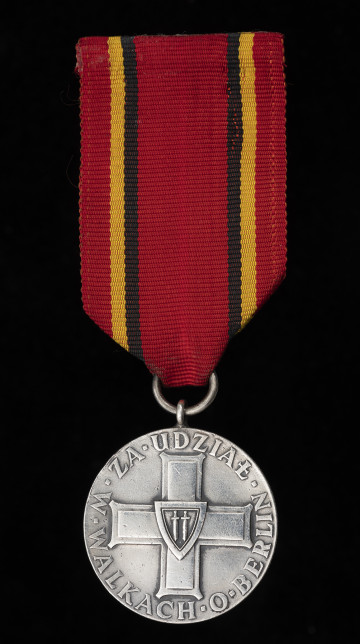
1/12 of a thaler (double groschen)
1694
National Museum in Szczecin
Part of the collection: Pomeranian coins
During the reign of Charles XI (1660–1697), the royal mint in Szczecin was leased by the tenants who were obliged to mint coins to the standard of the German monetary system. High prices of silver led to violation of the law and the production of low-value coins. In 1667, under the provisions of the union in Zinna (Jüterbog, Germany), a new ordinance was adopted which introduced new units minted to a higher Münzfuß. The main product were coins of the middle fraction – 1/3 of a thaler with a portrait of the ruler depicted as the Roman emperor. In 1672, the mint was leased to Daniel Syvertz, who also held the position of mintmaster from 1672 to 1676. Most of the coins minted at that time feature his initial DS on the obverse. An eye-catching inscription on the 1/3 of a thaler attracts placed in the reverse rim reads: POMERAN CITERIORIS, which means Fore Pomerania, at that time owned by Sweden. The reverse legends usually featured titulature of the Swedish rulers, with their Pomeranian title or a religious sentence. This reverse legend contains information about the territorial affiliation of the coin. It is a conscious reference to the provisions of the Treaty of Westphalia of 1648 which marked the end of the Thirty Years' War. In the treaty, the Pomeranian lands obtained by Sweden were recorded as Pomeraniae Citerioris, in order to distinguish them from the lands belonging to Brandenburg, named Pomeraniae Ulterioris (Farther Pomerania). Genowefa Horoszko
Author / creator
Object type
coin
Technique
coining
Material
silver
Creation time / dating
Creation / finding place
Owner
Muzeum Narodowe w Szczecinie
Identification number
Location / status

1694
National Museum in Szczecin

1672
National Museum in Szczecin

1966 — 1974
National Museum in Szczecin
DISCOVER this TOPIC
National Museum in Lublin
DISCOVER this PATH
Educational path